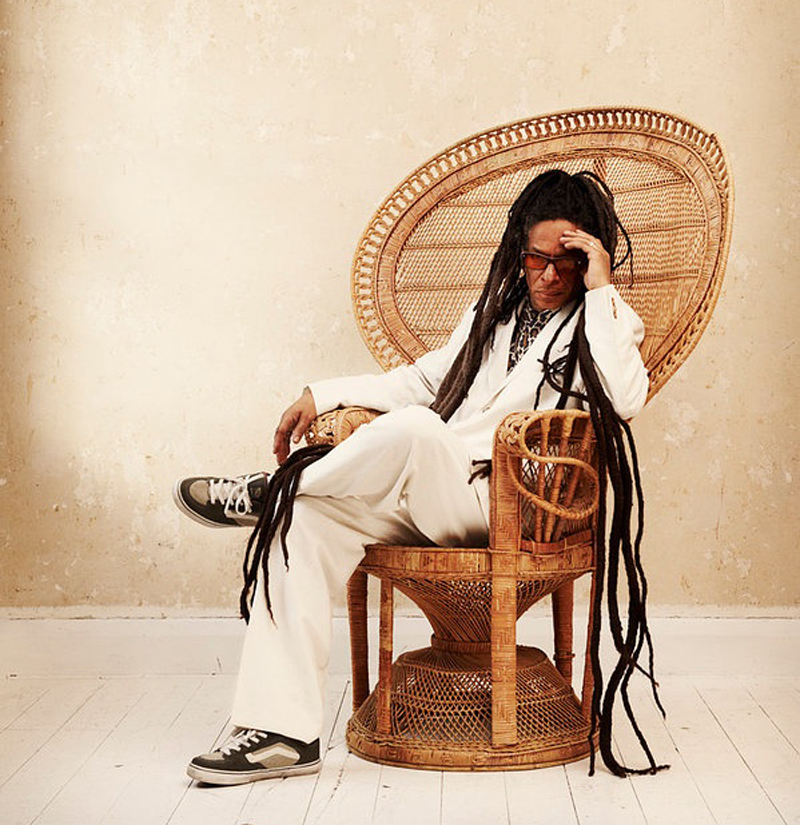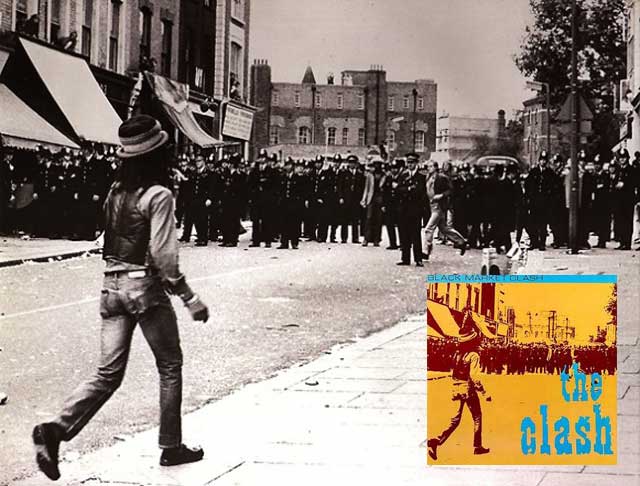photo: Dean Chalkley
One of the benefits age is hindsight. From my ancient vantage point, I can look back and survey all of the twists and turns my musical tastes have taken over the years. Some of my departures may have appeared as radical tangents or even defections at the time, but if you stand this far back and zoom out, the jagged zig zags of my detours become mere points along a long curve. The story of my musical learning curve is probably not much different to a lot of people searching for new music outside the mainstream in the days before the internet. Looking back, I can clearly see where a British man of West Indian descent named Don Letts has both consciously and subconsciously affected the trajectory of my musical consumption. If you are reading this, Don Letts has most likely had some of effect on yours as well.
For those don’t know Don Letts by name, one would probably describe him as “one of the guys from Big Audio Dynamite with the long dreadlocks”. The Don Letts Wikipedia description goes like this: “DJ, musician and film maker from London, England. Resident DJ at the seminal British punk venue the Roxy Club in the late 1970’s”.
You might not know the man, but if you grew up watching MTV in the 80’s, you are most likely familiar with his work. As a film maker, he captured punk’s seminal performances for bands such as the Sex Pistols, The Slits and The Clash. He went on to direct many of MTVs earliest videos such as Musical Youth’s “Pass the Dutchie”, The Pretender’s “Back on the Chain Gang” as well as a load of others. Don Letts was the lone Rasta facing off with police at the Notting Hill riots (as pictured on the cover of Black Market Clash). And yes, along with Clash guitarist and songwriter Mick Jones, Letts was a founding member of Big Audio Dynamite. He was one of the guys with dreadlocks (bassist Leo “E-Z Kill” Williams was the other one).
So, how does an English man of Jamaican descent raised in Thatcher era South London have a such an effect on a kid from the vanilla suburbs of Northern California? Geographically and culturally, the two are so far removed from each other that they might as well be on different planets. The answer is not simple, but this is a story of growth and transformation, so please bear with me.
Rewind: Northern California, 1980s. My personal musical pubescence arrived at the dawn of MTV. In August 1981, I caught my first glimpse of music television and was immediately hooked. For kids in the suburbs of Northern California, MTV brought exotic sounds and visuals straight into our living rooms from far away places like Los Angeles, New York City, England and Australia. Strange and wonderful music, weird accents, weird clothes and spikey hair! In the days before the internet, MTV was magic. For us growing up in the cultural void of newly sprouted tract homes and shopping malls, it was our first taste of counter culture and a fresh splash of life from beyond the abysmal classic rock FM stations that colored our young lives up to that point. In 5th grade, I bought a cassette tape of Madness One Step Beyond for three dollars from my classmate David. David was already cooler than I was. He had an older brother who rode a Vespa and wore a parka with a bullseye on the back. But I had my taste and I was determined to catch up. What does this have to do with Don Letts? We are getting to that.
Rewind: Kingston, Jamaica 1950s. In the 1950s, a British passenger liner named the HMT Empire Windrush offered cheap transport from the tiny Caribbean nation of Jamaica for anyone willing to work in the UK. The large migration of Jamaicans to England was knows as the “Windrush” generation. Many of the first influx of Jamaicans and other West Indians formed communities around South London in areas such as Brixton, Deptford and Lewisham and also parts of North London such as Ladbroke Grove and Notting Hill. Jamaican music will later become a crucial element in the sound and the ethos of The Clash (who hail from Ladbroke Grove, but we’re jumping ahead). During the Windrush, Don Lett’s parents emigrated from Jamaica to England and settled in South London. Don Letts born in 1956.
Don grew up listening to his father spin reggae and Carribean sounds during his post-church sound system that served as the focal point of the Jamaican community in Brixton on Sundays. This seed of Jamaican bass culture is a thread that runs through the Letts family to this day. Don’s son, Jet, is a dub step producer.
Fast-forward: Kings Road, London 1977. The story of Don Letts becomes significant for us music fans in 1977. It was a year that would change the course of music as we know it today. In 1977, Don was the manager at a clothing shop called Acme Attractions on the King’s Road in Chelsea, West London. Acme Attractions was inspired by Malcolm Mclaren and Vivienne Westwood’s Let It Rock shop also on the King’s Road. According to Wikipedia, Don’s duties at Acme Attractions included selling “electric blue zoot suits and jukeboxes” and “pumping dub reggae all day long.” It was at Acme Attractions that Don first met members of The Clash, Sex Pistols, Chrissie Hynde, Pattie Smith, Debbie Harry, Bob Marley and a young Boy George. Don’s connections with the future pioneers of what will eventually be called “Alterntive Music” was not the only fortunate thing that happened at Acme Attractions. Don’s perchance for smoking ganja and pumping dub reggae along with plans of Acme’s accountant, Andrew Czezoski, would lead to another important turning point.
NEXT UP: Big Ears, part 2: 100 Days of the Roxy Club



